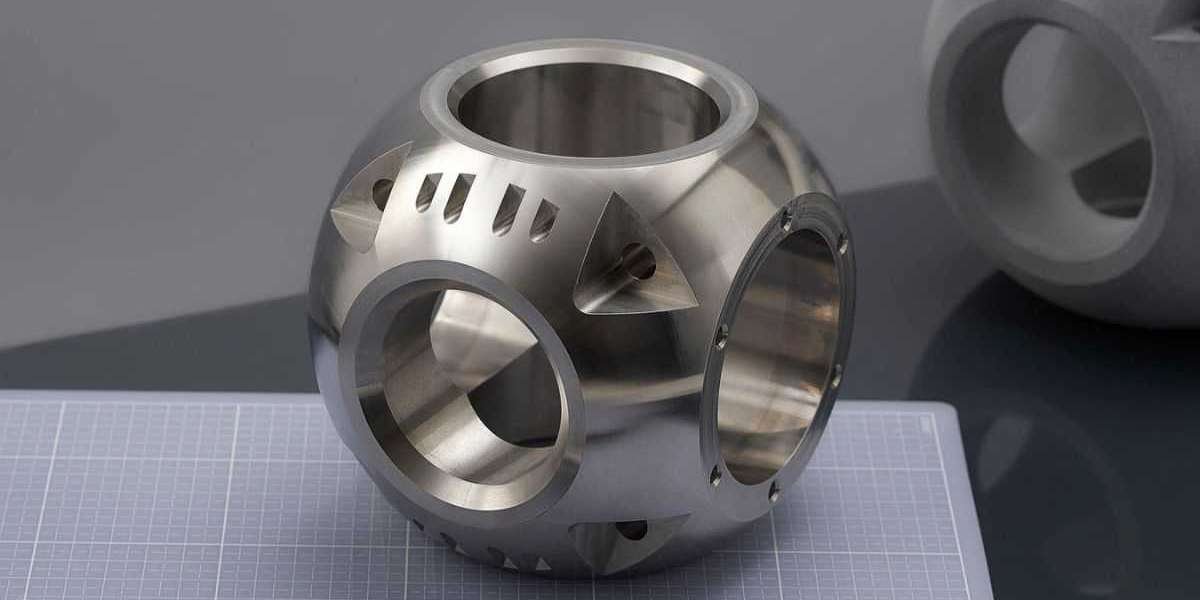In today’s fast-paced world, businesses are continuously striving to innovate and improve their product offerings. One of the key elements in achieving this is rapid prototyping, a process that allows companies to test and refine their designs before full-scale production. CNC prototype manufacturing plays a pivotal role in this process, offering precision, efficiency, and flexibility. In this article, we will explore what CNC prototype manufacturing is, its advantages, applications, and why it’s a game-changer in product development.
What is CNC Prototype Manufacturing?
CNC prototype manufacturing refers to the use of Computer Numerical Control (CNC) technology to produce prototypes or models of parts and products. CNC machines are automated tools that follow pre-programmed instructions to carry out various manufacturing processes, including milling, turning, drilling, and grinding. These machines are incredibly precise and can work with a variety of materials, such as metal, plastic, wood, and composites, making them ideal for creating prototypes.
A CNC prototype allows engineers and designers to bring their concepts to life, providing a physical representation of a design that can be tested for functionality, fit, and performance. CNC prototypes are often used to refine product designs before full-scale production begins, reducing the risks and costs associated with design flaws.
How Does CNC Prototype Manufacturing Work?
The CNC prototype manufacturing process begins with a 3D CAD (Computer-Aided Design) model of the product or part. The design is created using specialized software, and then the 3D model is converted into a machine-readable format (usually in the form of G-code). The G-code provides the CNC machine with the precise instructions needed to cut, shape, or mill the material into the desired shape.
Here’s a step-by-step overview of the CNC prototype manufacturing process:
Design Creation: The first step involves creating a 3D digital design of the product or part. This design includes all the required specifications, such as dimensions, geometry, and material properties.
Machine Setup: Once the design is finalized, the appropriate material is selected (metal, plastic, etc.), and the CNC machine is set up. This involves loading the material onto the machine and configuring the toolpaths for the prototype.
Manufacturing: The CNC machine follows the pre-programmed instructions and begins the manufacturing process. Depending on the complexity of the design, this can involve cutting, milling, drilling, and other processes to shape the material into the desired form.
Post-Processing: After the prototype is fabricated, it may undergo post-processing steps like sanding, polishing, or painting to ensure a high-quality finish.
Testing and Evaluation: Finally, the prototype is tested to evaluate its functionality, durability, and design. Any necessary modifications can be made to the design, and the process can be repeated until the prototype meets all requirements.
Advantages of CNC Prototype Manufacturing
CNC prototype manufacturing offers several advantages that make it an indispensable tool for businesses looking to streamline product development. Some of the key benefits include:
1. Precision and Accuracy
One of the primary advantages of CNC prototype manufacturing is the high level of precision and accuracy it offers. CNC machines are capable of producing parts with tolerances as tight as 0.001 inches, ensuring that prototypes match the exact specifications of the design. This level of precision is critical for testing prototypes and ensuring that they will function as intended.
2. Fast Turnaround
CNC machines can produce prototypes quickly, which is especially important for companies working under tight timelines. Unlike traditional manufacturing methods, which may require long lead times, CNC prototype manufacturing allows businesses to rapidly iterate on their designs. This quick turnaround is essential in industries where time-to-market is a key competitive advantage.
3. Cost-Effective
For companies that need to test multiple iterations of a design, CNC prototype manufacturing can be more cost-effective than traditional methods. CNC machining eliminates the need for expensive molds or tooling, which can be a significant upfront cost in traditional manufacturing. Additionally, the ability to create high-quality prototypes quickly reduces the costs associated with design revisions and errors.
4. Material Versatility
CNC machines are capable of working with a wide range of materials, including metals, plastics, composites, and even wood. This makes CNC prototype manufacturing highly versatile and suitable for a broad range of applications. Engineers can test their designs with different materials to determine which one offers the best performance for the final product.
5. Complex Geometries
CNC machines are capable of producing complex geometries that may be difficult or impossible to achieve with traditional manufacturing techniques. This is particularly useful for products that require intricate shapes or detailed features. Whether it’s a product with curved surfaces or small internal components, CNC machining can deliver the precision and detail required.
6. Reduced Risk of Production Errors
By creating a physical prototype before mass production, CNC prototype manufacturing allows companies to identify potential design flaws and issues early in the process. This significantly reduces the risk of errors in the final production run, saving both time and money.
Applications of CNC Prototype Manufacturing
CNC prototype manufacturing is used across various industries to develop products and components. Some common applications include:
1. Automotive Industry
In the automotive industry, CNC prototypes are used to develop and test components such as engine parts, chassis, interior fittings, and body panels. CNC prototyping allows manufacturers to test new designs, materials, and manufacturing processes before committing to full-scale production.
2. Aerospace Industry
The aerospace industry relies on CNC prototype manufacturing for the development of highly complex and precise components, such as turbine blades, landing gear, and avionics. Prototypes are essential for testing the aerodynamics, weight, and strength of aerospace parts to meet strict safety and performance standards.
3. Medical Devices
CNC prototype manufacturing plays a crucial role in the development of medical devices and implants, such as prosthetics, surgical instruments, and diagnostic equipment. Prototypes are used to ensure the design is functional, safe, and meets regulatory standards before mass production.
4. Consumer Electronics
In the consumer electronics industry, CNC prototypes are used to develop components for smartphones, tablets, computers, and other devices. Prototypes are used to test the design, fit, and functionality of these products, allowing engineers to make improvements before manufacturing large quantities.
5. Industrial Equipment
CNC prototype manufacturing is essential in the development of industrial equipment and machinery. Whether it’s a new conveyor system or a complex tool, prototypes help manufacturers evaluate the design, ergonomics, and functionality of their equipment before production.
Why CNC Prototypes Are Essential for Product Development
CNC prototypes are essential in product development for several reasons:
Testing and Validation: CNC prototypes allow businesses to test their designs in real-world conditions, ensuring that the product will perform as expected before mass production begins.
Faster Iterations: With rapid prototyping, businesses can quickly make changes to their designs and create new versions of prototypes for testing. This allows for faster product iterations and a more efficient design process.
Cost Savings: By identifying design flaws and making adjustments early in the process, companies can avoid costly production mistakes and reduce the risk of creating a product that doesn’t meet customer expectations.
Innovation: The ability to quickly and easily produce prototypes encourages innovation and experimentation. Designers and engineers can test new ideas, materials, and features without the constraints of traditional manufacturing methods.
Conclusion
CNC prototype manufacturing has revolutionized the way products are designed and developed. By providing a quick, cost-effective, and highly accurate method for producing prototypes, CNC machining enables companies to test and refine their designs with precision and efficiency. Whether in the automotive, aerospace, medical, or consumer electronics industries, CNC prototypes play a crucial role in bringing innovative products to market. If you're looking to streamline your product development process and reduce the risk of production errors, CNC prototype manufacturing is the key to success.












